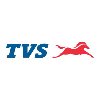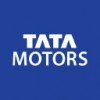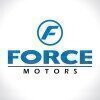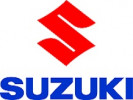Filter interviews by
ILJIN AUTOMOTIVE Diploma Trainee Engineer Interview Questions, Process, and Tips
ILJIN AUTOMOTIVE Diploma Trainee Engineer Interview Experiences
1 interview found
I applied via Referral and was interviewed before Oct 2020. There was 1 interview round.
Interview Questionnaire
5 Questions
- Q1. What is mean by PLC.?
- Ans.
PLC stands for Programmable Logic Controller, which is a digital computer used for automation of industrial processes.
PLC is used to control and monitor various industrial processes.
It is programmed using ladder logic or other programming languages.
PLC can be used in various industries such as manufacturing, automotive, and food processing.
It can control machines, motors, and other equipment.
PLC can be connected to sen...
- Q2. What are the sensor and its types?
- Ans.
Sensors are devices that detect and respond to physical stimuli and convert them into electrical signals.
There are various types of sensors such as temperature sensors, pressure sensors, proximity sensors, motion sensors, light sensors, etc.
Temperature sensors measure the temperature of an object or environment and include thermocouples, RTDs, and thermistors.
Pressure sensors measure the pressure of gases or liquids an...
- Q3. Types of motors and starts ?
- Ans.
There are various types of motors and starts used in industries.
Types of motors: AC motors, DC motors, Servo motors, Stepper motors
Types of starts: Direct-on-line (DOL) start, Star-delta start, Soft starter, Variable frequency drive (VFD) start
AC motors are widely used in industries due to their low cost and easy maintenance
DC motors are used in applications where precise speed control is required
Servo motors are used ...
- Q4. What is VFD?
- Ans.
VFD stands for Variable Frequency Drive. It is an electronic device that controls the speed of an AC motor.
VFD is used to save energy and improve motor control.
It can adjust the frequency and voltage supplied to the motor.
VFDs are commonly used in HVAC systems, pumps, and fans.
They can also be used in industrial applications such as conveyor belts and machine tools.
VFDs can provide soft start and stop capabilities, red...
- Q5. DOL Starter working.?
- Ans.
DOL starter is a type of motor starter used to start and stop motors.
DOL stands for Direct-On-Line.
It is used for motors with low to medium power ratings.
It consists of a contactor, overload relay, and start and stop buttons.
When the start button is pressed, the contactor closes and the motor starts.
When the stop button is pressed, the contactor opens and the motor stops.
It provides full voltage to the motor during sta...
Interview Preparation Tips
More work in Maintenance department
Skills evaluated in this interview
Top trending discussions






Interview questions from similar companies

I applied via Naukri.com and was interviewed before Jul 2020. There were 5 interview rounds.
Interview Questionnaire
2 Questions
- Q1. How can you satisfy your job
- Q2. With hardwork and my experience
Interview Preparation Tips

I applied via Campus Placement and was interviewed in Feb 2021. There was 1 interview round.
Interview Questionnaire
2 Questions
- Q1. Define two stroke and four stroke engine.
- Ans.
Two stroke engine completes a power cycle in one revolution of the crankshaft while four stroke engine completes it in two revolutions.
Two stroke engine has no valves and uses ports to let in air and fuel mixture and expel exhaust gases.
Four stroke engine has separate intake, compression, power, and exhaust strokes.
Two stroke engine is simpler and lighter but less efficient and more polluting than four stroke engine.
Ex...
- Q2. What is the function of lubrication?
- Ans.
Lubrication reduces friction and wear between two surfaces in contact with each other.
Reduces friction and wear between two surfaces
Prevents overheating and damage to the machinery
Improves efficiency and performance of the machinery
Types of lubricants include oil, grease, and dry lubricants
Lubrication systems include splash, pressure, and circulating systems
Interview Preparation Tips

I applied via Campus Placement and was interviewed before Aug 2020. There were 3 interview rounds.
Interview Questionnaire
2 Questions
- Q1. 1 some technical questions and some non technical questions , interview is easy to crack
- Q2. They asked questions on automotive engine
Interview Preparation Tips

Interview Questionnaire
2 Questions
- Q1. What do you mean by CFMEA?
- Ans.
CFMEA stands for Control Failure Mode and Effects Analysis.
CFMEA is a systematic approach used to identify and mitigate potential failures in a process or system.
It involves analyzing failure modes, their causes, and the potential effects on the process or system.
CFMEA helps in prioritizing and implementing control measures to prevent or minimize failures.
It is commonly used in industries such as manufacturing, automot...
- Q2. Is system level or component level DFMEA given main preference?
- Ans.
System level DFMEA is given main preference.
System level DFMEA considers the entire system and its interactions.
Component level DFMEA focuses on individual components.
System level DFMEA is more comprehensive and effective in identifying potential failures.
Example: In automotive industry, system level DFMEA would consider the entire vehicle and its subsystems.
Example: In medical devices, system level DFMEA would conside...
Interview Preparation Tips

I applied via Campus Placement and was interviewed before Nov 2020. There were 3 interview rounds.
Interview Questionnaire
1 Question
- Q1. General questions regarding automobile and quality
Interview Preparation Tips

I applied via Recruitment Consulltant and was interviewed before Feb 2021. There was 1 interview round.
(2 Questions)
- Q1. Open pump house and Tunnels
- Q2. Road and
Interview Preparation Tips

I applied via Recruitment Consulltant and was interviewed before Feb 2021. There was 1 interview round.
(2 Questions)
- Q1. Open pump house and Tunnels
- Q2. Road and
Interview Preparation Tips

Diploma Trainee Engineer Interview Questions & Answers
Hero MotoCorpposted on 11 May 2022
I applied via Naukri.com and was interviewed before May 2021. There were 4 interview rounds.

(1 Question)
- Q1. What is the civil engineering
- Ans.
Civil engineering is a branch of engineering that deals with the design, construction, and maintenance of infrastructure.
Civil engineering involves the planning, design, and construction of buildings, bridges, roads, dams, and other structures.
It includes various sub-disciplines such as structural engineering, geotechnical engineering, transportation engineering, and environmental engineering.
Civil engineers use princi...
Aptitude test
Interview Preparation Tips
- Yes / No
. Apply even if you're not fully qualified...

Diploma Trainee Engineer Interview Questions & Answers
Mahindra & Mahindraposted on 22 Oct 2020
Interview Questionnaire
3 Questions
- Q1. What is the mechanical
- Ans.
Mechanical engineering is a branch of engineering that deals with the design, manufacturing, and maintenance of mechanical systems.
It involves the study of mechanics, thermodynamics, and materials science.
Mechanical engineers design and develop machines, tools, and equipment.
They work in various industries such as automotive, aerospace, and manufacturing.
Examples of mechanical systems include engines, turbines, and rob...
- Q2. Tell any 5 G-codes
- Ans.
G-codes are used in CNC machines to control the movement of the cutting tool. Here are 5 commonly used G-codes.
G00 - Rapid positioning
G01 - Linear interpolation
G02 - Circular interpolation (clockwise)
G03 - Circular interpolation (counterclockwise)
G28 - Return to home position
- Q3. What is ic engine give examples
- Ans.
IC engine stands for Internal Combustion engine. It is a heat engine that converts chemical energy into mechanical energy.
IC engine is used in automobiles, generators, and other machinery.
It works by burning fuel inside a combustion chamber to create high-pressure gases that move a piston.
Examples of IC engines include gasoline engines, diesel engines, and natural gas engines.
ILJIN AUTOMOTIVE Interview FAQs
Tell us how to improve this page.
ILJIN AUTOMOTIVE Interviews By Designations
- ILJIN AUTOMOTIVE Quality Auditor Interview Questions
- ILJIN AUTOMOTIVE Production Interview Questions
- ILJIN AUTOMOTIVE Diploma Trainee Engineer Interview Questions
- ILJIN AUTOMOTIVE Quality Engineer Interview Questions
- ILJIN AUTOMOTIVE CNC Production Machine Operator Interview Questions
- ILJIN AUTOMOTIVE Production Engineer Interview Questions
- ILJIN AUTOMOTIVE Trainee Interview Questions
Interview Questions for Popular Designations
- Diploma Mechanical Engineer Interview Questions
- Diploma Electrical Engineer Interview Questions
- Diploma Apprentice Trainee Interview Questions
- Diploma Electronics Engineer Interview Questions
- Diploma Chemical Engineer Interview Questions
- Diploma Civil Engineer Interview Questions
- Diploma Engineer Trainee - DET Interview Questions
- Diploma Automobile Engineer Interview Questions
- Show more
Diploma Trainee Engineer Interview Questions from Similar Companies
ILJIN AUTOMOTIVE Diploma Trainee Engineer Reviews and Ratings
based on 1 review
Rating in categories
|
Engineer
53
salaries
| ₹2 L/yr - ₹5.1 L/yr |
|
Production Supervisor
38
salaries
| ₹1.8 L/yr - ₹6.5 L/yr |
|
Deputy Manager
29
salaries
| ₹4.3 L/yr - ₹8 L/yr |
|
Quality Engineer
21
salaries
| ₹2 L/yr - ₹4.5 L/yr |
|
Senior Engineer
19
salaries
| ₹3 L/yr - ₹7 L/yr |

Tata Motors

Mahindra & Mahindra

Maruti Suzuki

Ashok Leyland
- Home >
- Interviews >
- ILJIN AUTOMOTIVE Interview Questions >
- ILJIN AUTOMOTIVE Diploma Trainee Engineer Interview Questions













